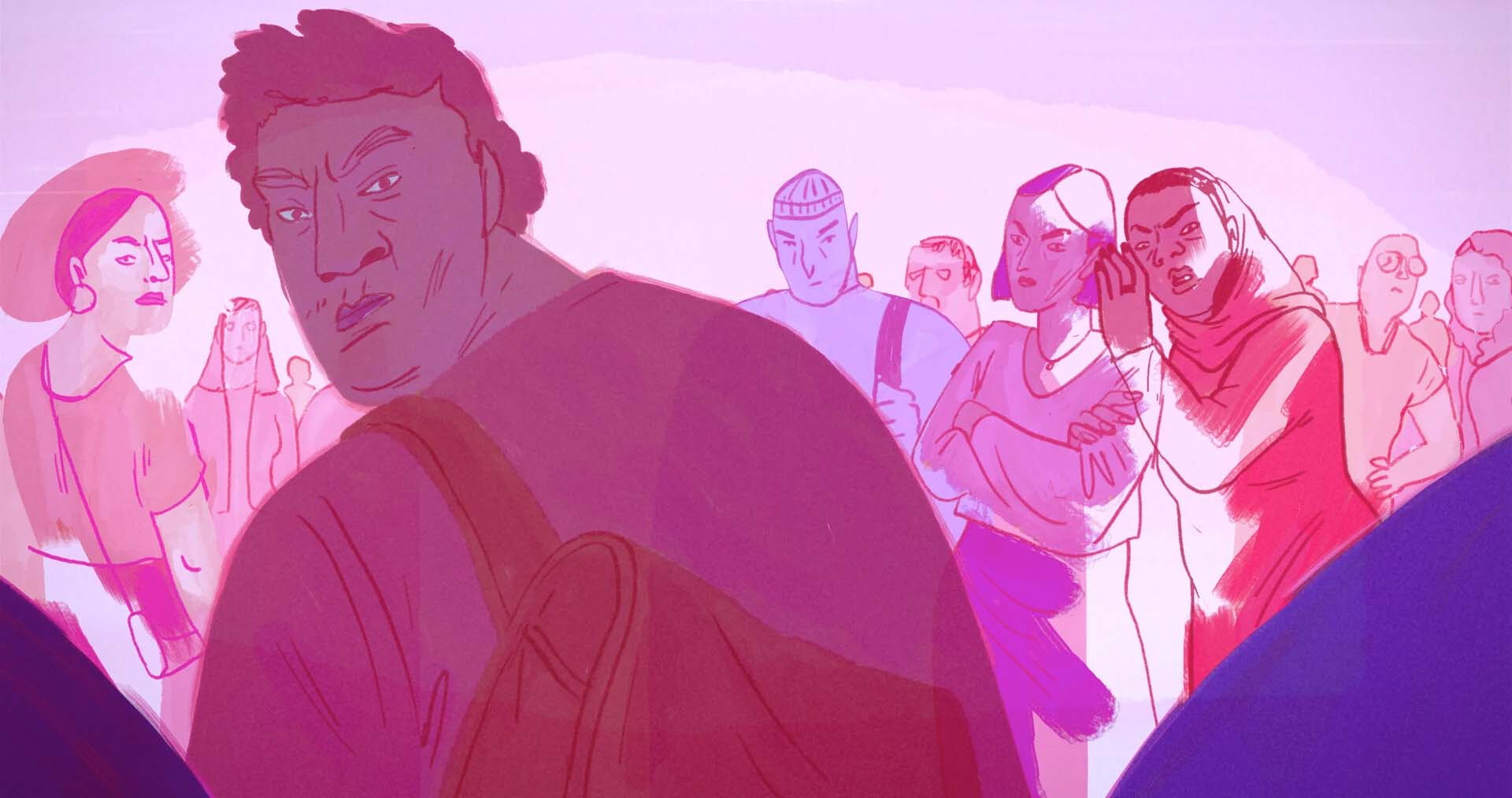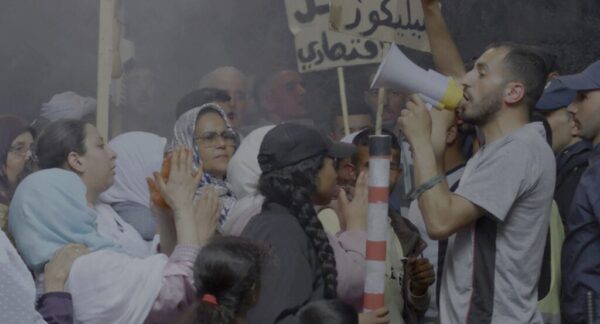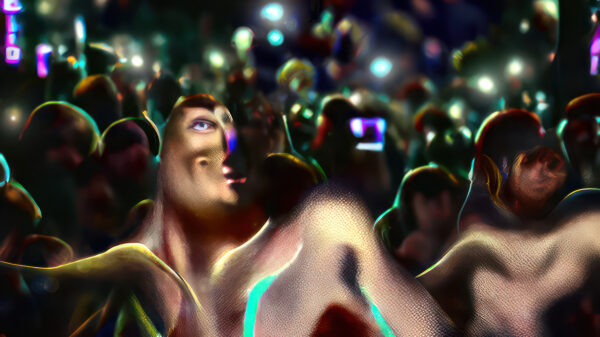Where Shadows Hide and Visions Speak
Shadows
The naive hopefulness of Shadows’ young protagonist permeates its difficult subject matter, where a young girl’s voice sparks the vivid rebellion of its animated vessel.

Rand Beiruty’s Shadows is an animated purgatory; a story encased in an endearing optimism it doesn’t deserve. In an airport at night time, 15-year-old Ahlam flees her home with dreams of becoming an air hostess. Reflecting on that which she leaves behind, Ahlam brings her past to life for the audience to see through animated memories, haunted by the dreadful shadows of her corrupted innocence. Ahlam—the youngest mother in the world—will soon be free, but unable to leave behind the weight of her trauma. Once injected, it settles deep beneath the flesh of those who endure it.
At the 29th edition of REGARD – Saguenay International Short Film Festival in March, Shadows won The Grand Prize, commended for its compelling rendering of child marriage and domestic abuse. Both Beiruty’s creative approach and the context of this new short come from filming her debut feature documentary, Tell Them About Us, where working with a group of Arab, Kurdish and Roma teenage girls she uncovered the story of Shadows and its testimony to the power of resilience. For the girl’s own safety, though through the animated medium and a carefully constructed pseudonym, Ahlam’s identity has been preserved within Shadows; her voice immortalised in tragically vibrant images.
Beiruty’s use of animation is not dissimilar to that of Jonas Poher Rasmussen’s Oscar-nominated feature Flee, equally praised for its methods of both conveying and concealing identity. Whilst Rasmussen’s film sought to safeguard the practicalities of a man’s citizenship, Beiruty’s film is inherently a protection of vulnerability, where Ahlam’s troubled past now lives within the confines of Shadows’ animated dreamscape. This is not the first time Beiruty has adapted her documentary style to the medium, though, with both of her early shorts—Halfway (2017) and Encountering Samir (2020)—using either sections of or fully animated storytelling. Though neither feel quite so courageous as Shadows with their aesthetics. In Beiruty’s newest short, the medium’s protective faculties resemble that of a political act; one which allows for powerful truths to shine through the cast of their oppressions in pure, cinematic rebellion, working as a collective mouthpiece for many more young victims of child marriage.
Visually, this rebellion is led by Beiruty’s use of colour, which tints Ahlam’s recital with a hopeful joy. For such an unsettling story of abuse to be both “imaginary and beautiful at the same time”, in Ahlam’s own words, highlights the protagonist’s clemency. Her optimism lights up every frame, despite the dreadful enormity of her childhood. From the very first scene, cheerful pinks, yellows, and oranges fill Ahlam’s visions of a simple life, lived with a loving mother back in Baghdad. As the young girl admits that she “didn’t know what death was” at that time, her innocence becomes palpable, as a swift movement of birds overhead takes her mother away, revealing the deep blue shadow of a coffin in their wake.
This depiction of death, as a slow-moving, engulfing flock of dark shadows, uses colour as a means to make sense of Beiruty’s rich symbolism. The darker the colours get, the faster the shadows of corruption encroach, leaving Ahlam’s memories hued with the deep purples and blues of lost innocence. This self-awareness of guilt and shame manifests further in the pointing and sneering of the other airport passengers around her, as if they are seeing Alham’s abject past trailing along behind her.

Shadows (Rand Beiruty, 2024)
Through this moment, the young girl’s shame takes the shape of a dark blue, shadowy stag that clambers around the airport at Ahlam’s side. The chaotic energy of the animal seems at first linked to descriptions of Alham’s husband; a man who is “mentally unstable”, who beats and kicks her, like the booting hooves of a startled deer. In like manner, the sheer absurdity of Shadows’ central image—a young girl and a full-grown stag in an airport—feels as illogical as a 13-year-old marrying a full-grown man, though it is not until the final moments of Beiruty’s film that the creature’s true significance is revealed.
“Like a deer among wolves” is how Ahlam describes herself, disclosing that her antlered companion is not the embodiment of her husband, but in fact an unruly apparition of her own trauma. It is a reminder of that which lies beneath the surface, ready to startle like a frightened animal. Though the wolves in question—her husband and his family—are left behind in Baghdad, so too is Ahlam’s baby; confiscated by her in-laws like a toy from a naughty child.
Devastation echoes in the film’s closing sentiments, informing us of Ahlam’s wish that the film could include an image of her son, in his physical absence from her new life. This interjection of the real Ahlam is a heartbreaking reminder that these child brides have, in many cases, lost more than just their innocence, though Ahlam’s astonishing resilience is far brighter than that of the demons left behind to haunt her. Beiruty uses animation not only to protect but also to remember, creating space for both the welcome and unwelcome images from Ahlam’s past, and guiding her toward a liberated future.




There are no comments yet, be the first!